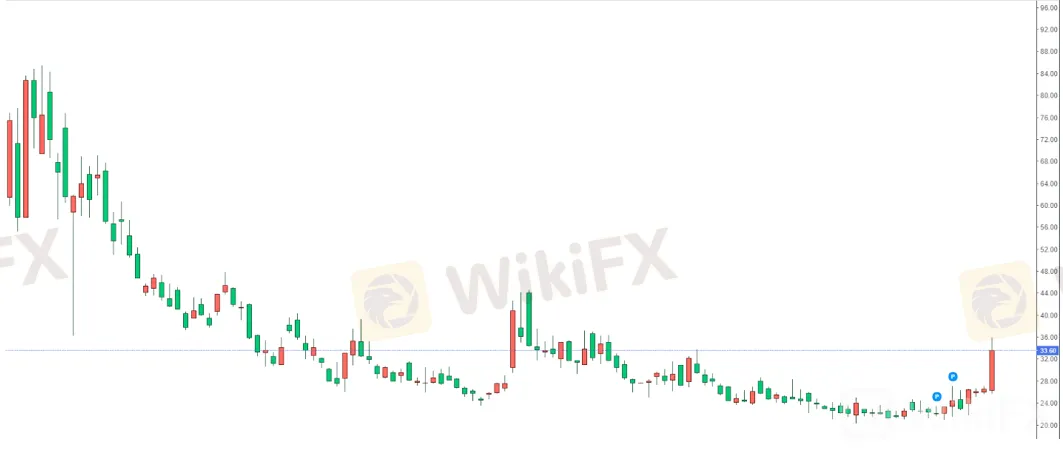简体中文
繁體中文
English
Pусский
日本語
ภาษาไทย
Tiếng Việt
Bahasa Indonesia
Español
हिन्दी
Filippiiniläinen
Français
Deutsch
Português
Türkçe
한국어
العربية
Oil May Decline on Plunging Wall Street & Soaring VIX
Abstract:On Thursday, the Wall Street saw a sharp drop ahead of the upcoming non-farm payrolls; The fear index (VIX), a popular measure of the stock market's expectation of volatility, largely rallied to an intraday high of 35.94% from 25.66%
WikiFX News (4 Sept) - On Thursday, the Wall Street saw a sharp drop ahead of the upcoming non-farm payrolls; The fear index (VIX), a popular measure of the stock market's expectation of volatility, largely rallied to an intraday high of 35.94% from 25.66%; WTI crude further penetrated the level of $41.30 to an intraday low of $40.22.
As the FED Chair Powell has repeatedly emphasized the importance of labor data earlier, bulls took profits before the release of non-farm payrolls, which punished U.S. stocks after fresh highs in a row.
On the other hand, Markit announced yesterday that its final reading of the Services PMI was 55, indicating the U.S. economy is regaining energy. However, such recovery occurs in an imbalance way as the activities of consumer-oriented sectors are still falling steadily due to the continuous practice of social distancing.
Moreover, the uncertainty in Sino-U.S. trade also curbs markets' bullish outlook. The Wall Street may see its short-term loss deepened in future tradings, and the downside may be steep if the upcoming non-farm payrolls prove to be poor.
WTI is struggling around the level of $41.30 and may further test the support here in the short run, while a breach below the level may bring $34.50 on the radar in the medium run. The factor that most limits oil prices is the sluggish revival of demand due to the uncertainty in global economic recovery. Consequently, oil prices are expected to be weak before the good news about vaccines being more specific.
All the above is provided by WikiFX, a platform world-renowned for foreign exchange information. For details, please download the WikiFX App: bit.ly/WIKIFX

VIX Chart
Disclaimer:
The views in this article only represent the author's personal views, and do not constitute investment advice on this platform. This platform does not guarantee the accuracy, completeness and timeliness of the information in the article, and will not be liable for any loss caused by the use of or reliance on the information in the article.
Read more

Coronavirus investing strategy, how to trade next stock market crash - Business Insider
History shows that stocks are likely to return to their lows before a full recovery kicks in, the strategists said.
Goldman Sachs says "bond proxies" best bet amid trade war, growth fears
Investors should go for stocks "that have lagged their typical macro relationships the most relative to other bond proxies," Goldman Sachs said.
Stock market, Treasury volatility about to spike, Wall Street warns
Jamie Dimon and Jeff Gundlach are among those sounding the alarm on a spike in interest rates that would rough up the stock market.

VIX Curve Inversion: A Bad Omen For the S&P 500
VIX Curve Inversion: A Bad Omen For the S&P 500
WikiFX Broker
Latest News
Ghana Trader Jailed for $300K Forex and Crypto Scam
US Dollar Surge Dominates Forex Market
Hong Kong Police Bust Deepfake Crypto Scam Syndicate Involving $34 Million
Is it a good time to buy Korean Won with the current depreciation?
Pepperstone Sponsored the "Aston Martin Aramco Formula One Team"
ACY Securities Integrates MetaTrader 5 to Enhnace Copy Trading Service
Soegee Futures Review: Should You Trust This Broker?
Malaysian Pilot Loses RM1.36 Million in UVKXE Investment App Scam
Indonesia officially joins the BRICS countries
Attention! Goldman Sachs Cuts Gold Target to $2910
Currency Calculator






